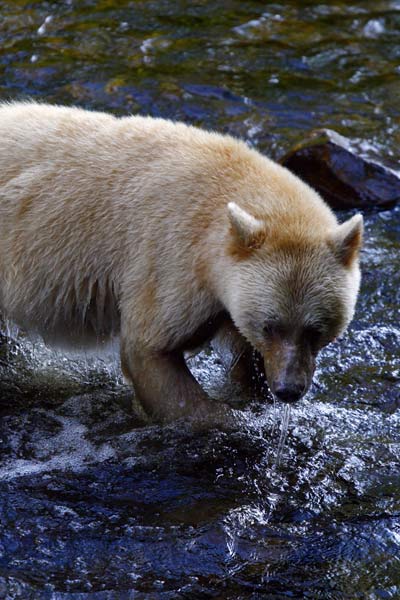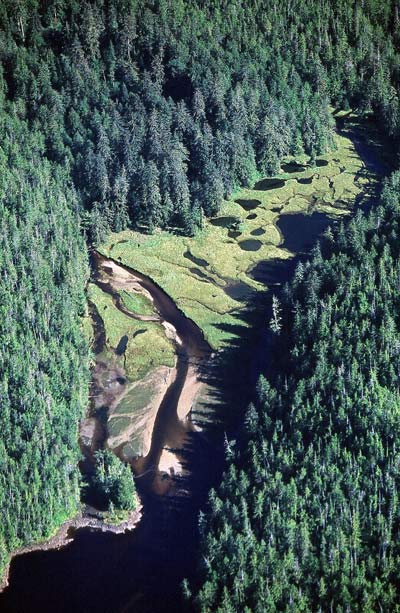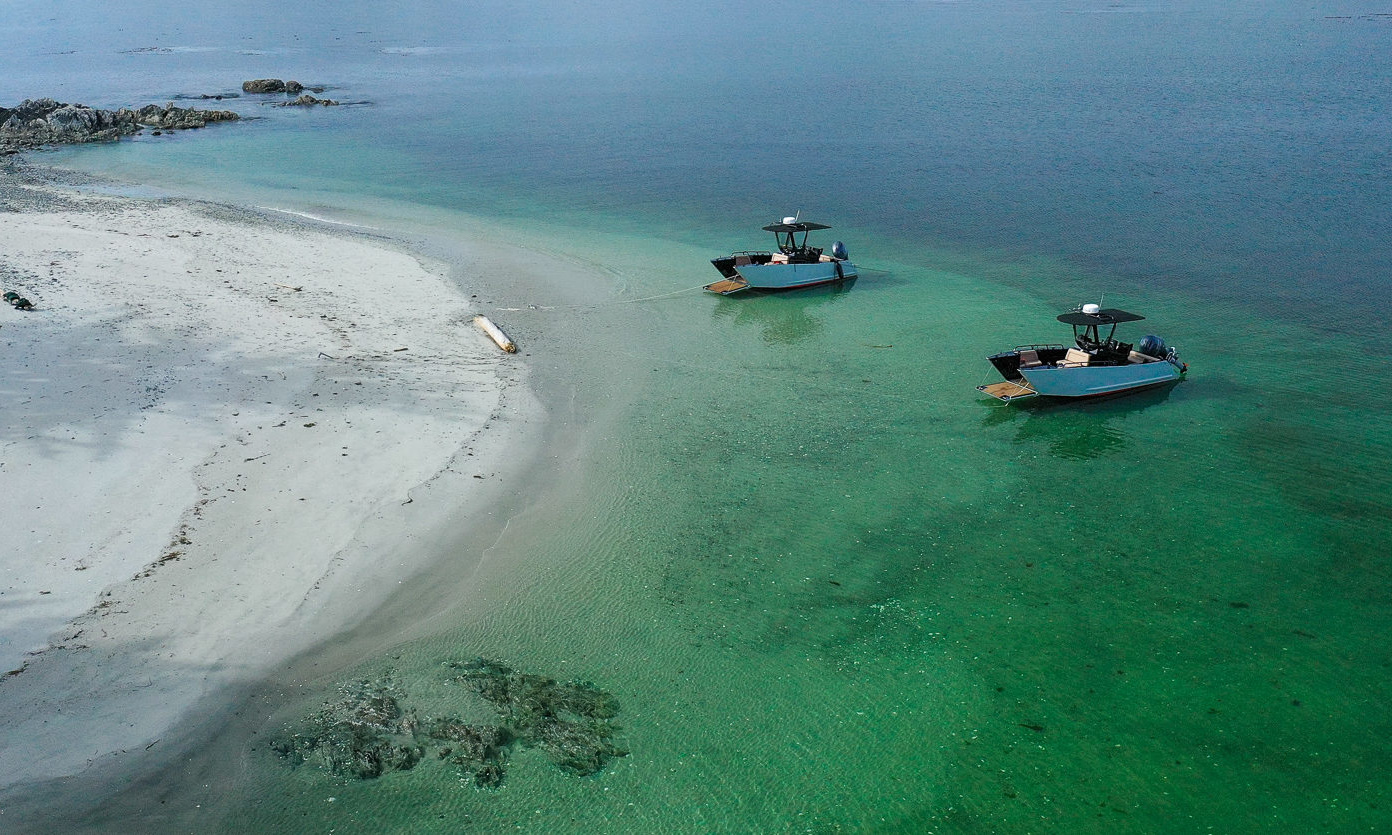Great Bear Rainforest & the Queen’s Commonwealth Canopy

The Great Bear Rainforest on a misty day in September. Photo by Phil Stone
BC’s Great Bear Rainforest was formally inducted into the Queen’s Commonwealth Canopy on Nov. 16, 2016. Some people may wonder, what is the Great Bear Rainforest and the QCC, and what does this all mean?
As we’ve been operating trips in the region for 25 years, we thought we’d share what we know.
What Is the Great Bear Rainforest?

Spirit bear fishing for salmon, Great Bear Rainforest. Photo by Kevin Smith.
The Great Bear Rainforest is 6.4 million hectares on the northwest coast of British Columbia, Canada. The area runs from the height of the coast mountains (which form the eastern border), west to the offshore islands in the Pacific Ocean, and from Knight Inlet in the south to the Alaska-BC border in the north. This is a stunning landscape of fjords, mountains, thousands of islands, protected waterways and wild, west-coast beaches. It contains many intact, old-growth watersheds with salmon-bearing rivers and streams. It is home to a good population of grizzly bears, coastal wolves and black bears, including the rare white phase, the Spirit bear. In the water swim fish and seabirds, whales and dolphins and many other marine mammals. It has also been inhabited by humans for likely at least 15,000 years.
What Is the Queen’s Commonwealth Canopy?

A small river in the Great Bear Rainforest empties into a fjord. These waterways are critical for the important interaction between forest and salmon. Photo by Kevin Smith.
The QCC is a pan-Commonwealth network of forest conservation projects that aims to conserve indigenous forests for future generations, in the name of Queen Elizabeth II. It does not necessarily protect any more forest than is already protected, although that is possible. Its main benefits will be that is raises awareness of the protected areas and the need to protect forests, and may facilitate information sharing between people working in the forests under the Canopy. It is also a monument created for the Queen.
What Does It Mean for the Great Bear Rainforest to Be Part of the QCC?

The welcoming figure at the entrance to Klemtu’s big house, on Swindle Island in the Great Bear Rainforest. Photo by Brandon Harvey.
There are no new demands or regulations; it is our own laws in British Columbia and on the coast that protect it. Likely the biggest benefit will be raising awareness that it exists, and needs protection. It is possible that being part of the QCC will make it easier for the protections in the Great Bear to be maintained, because of the larger audience in favour of its protection.
How Is the Great Bear Rainforest Protected?
Much of the forest land is protected from industrial-style clearcut logging through a land-use planning process that took more than 20 years. A smaller percentage of it is protected from any logging at all. The agreement still allows residents to earn a living through activities that don’t harm it — such as eco-tourism, sustainably harvesting non-timber resources, and so forth.
The agreement to protect the land was unprecedented. It came from a consensus-based negotiation that lasted 20 years, with dozens of stakeholders who represented millions of people. It is a great achievement to be celebrated. Read about the agreement here.
That is not to no further protections are required. They are. For example, the water and species that live in it, which is slowly becoming known as the Great Bear Sea, has not received any additional protection. The ocean is inextricably linked with the land here, one example being that the salmon are born in the forest streams, move to the ocean as they grow, and return to the forest streams to spawn and die. The salmon’s dead bodies actually feed the trees in the forest. These trees in turn create the habitat that they need to be born and grow.
The ocean and its inhabitants are threatened by proposed heavy oil supertanker routes, LNG plants and so forth. On land, even in the protected areas, bears and wolves can be hunted and killed for the ‘sport’ of trophy hunting. Read more about how to help with these protections here (trophy hunting) and here (tankers).
How Do People Earn a Living Here?
There are many ways people earn a living, such as ecotourism like our boutique expedition cruises or like wilderness lodges, to traditional fisheries such as herring roe-on-kelp, to government services for the local communities.
Isn’t There a Built-in Conflict Between A Queen’s Commonwealth Project and the Coastal First Nations Traditional Territory It’s In?
The protection of the forest itself is an entirely local endeavour. Coastal First Nations communities were part of the negotiation from the outset, and they had 10 years of direct government to government negotiation with the BC government after the first iteration of the Agreement was announced in 2001. Since this is a ceremonial recognition of this incredible achievement, the Heiltsuk welcomed the Duke and Duchess of Cambridge to Bella Bella in September 2016 to announce the inclusion in the QCC. Coastal First Nations also took it as an opportunity for reminding the world about relations between the British Crown and their nation, which has a long history and which have been stalled for decades. You can read more about that here.
